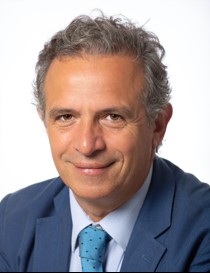Research Article
Daniel Obochi Jalija*
Daniel Obochi Jalija*
Corresponding
Author
Ahmadu Bello University, School of Basic and Remedial
Studies, P.M.B. 6007, Funtua, Katsina State, Nigeria.
E-mail: danieljalija@yahoo.com, Tel: +2349024326951
Aminu Umar
Aminu Umar
Ahmadu Bello University, School of Basic and Remedial
Studies, P.M.B. 6007, Funtua, Katsina State, Nigeria.
Abstract
Fungi, like other microorganisms have the ability to remove heavy metals from solution as many studies have shown. This study focused on the biosorption capacity of immobilized Aspergillus fumigatus biomass for Cu(II) and Ni(II) ions in solution. The dependence of the biosorption efficiency on various parameters such as biosorbent weight, solution pH, contact time and initial metal ion concentration was investigated. The maximum Cu(II) removal efficiency of 98.08 % was recorded at pH 5.0 and contact time of 2 hours. For Ni(II) ions the maximum efficiency of 98.53 % was recorded at pH 5.0 and contact time of 2 hours also. The data from the batch experiments had a good fit to both Langmuir and Freundlich isotherms. The R2 values for the Langmuir isotherm for Cu(II) and Ni(II) ions were 0.9879 and 0.9900 respectively. The maximum biosorption capacity, Qo, for Cu(II) was 3.86 mg/g and for Ni(II), it was 10.59 mg/g. The R2 values as obtained from the plots were 0.9376 for Cu(II) and 0.9074 for Ni(II). The kinetic data had a better fit for the pseudo – second order kinetic model than the pseudo - first order model indicating that chemisorption is the possible mechanism for the biosorption process. It can therefore be inferred from these results that the biomass of Aspergillus fumigatus immobilized in calcium alginate is a low – cost, readily available biosorbent for the removal of copper and nickel ions from wastewaters.
Keywords
Biosorption, Aspergillus fumigatus, Langmuir isotherm, Freundlich isotherm.
References | |
1. | Kanamarlapudi, S.L.R.K., Chinalpudi, Mudadda, S.; Application of biosorption for heavy metals removal from wastewaters. Biosorption. 2018, 18, 69–97. http://dx.doi.org/10.1016/intechopen.77315 |
2. | Jaishankar, M.; Tseten, T.; Anbalagan, N.; Matthew, B.B.; Beeregowda, K.N. Toxicity mechanism and health effects of some heavy metals. Interdis. Toxicol. 2014, 7(2), 60 – 72. https://doi:10.2478/intox - 2014 - 0009 |
3. | Sharma, A.; Sharma, P.K.; Malviya, R. Role of different parameters and mathematical models for metal ions adsorption from industrial wastewater. Biointerf. Res. Appl. Chem. 2020, 10(3), 5516–5523. https://doi.org/10.33263/BRIAC103.516523 |
4. | Joshi, J.; Sahu, O. Adsorption of heavy metals by biomass. J. Applied and Environmental Microbiology. 2014, 2(1), 23 – 27. https://doi.org/10.12691/jaem-2-1-5 |
5. | Oyewole, A.O.; Zobeashia, S.S.L.; Oladoja, E.O.; Raji, R.O.; Odiniya, E.E.; Musa, A.M. Biosorption of heavy metal polluted soils using bacteria and fungi isolated from soil. SN Applied Sciences. 2019, 1, 857 – 863. https://doi.org/10.1007/s42452019879–4 |
6. | Kapoor, A.; Viraraghavan, T. Fungal biosorption – An alternative treatment for heavy metal bearing wastewaters: A review. Bioresour. Technol. 1995, 53:195–206. https://doi.org/10.1016/0960 - 8524(95)0072m |
7. | Javanbhakht, V.; Alavi, S.A.; Zilouei, H. Mechanisms of heavy metal removal using microorganisms as biosorbent. Water Sci. Technol. 2014, 69(9), 1775–1787. https://doi.org/10.2166/wst.2013.718 |
8. | Chojnacka, K. Biosorption and bioaccumulation in practice. Nova Science Publishers, UK, 137, 2009. |
9. | Pundir, R.; Dastidar, M.G. Recovery of Cu and Ni ions from metal – loaded fungal biomass using acidic eluent. Int. J. Chem. Environ. Engin. 2010, 1(1), 63-66. |
10. | Mishra, S.P. Adsorption of copper and zinc on calcium alginate immobilized Penicillium sp. Indian J. Chem. Technol. 2013, 20, 21 – 25. https://nopr.niscpr.res.in/handle/123456789/15862 |
11. | Montgomery, D.C. Design and analysis of experiments. 8th edition. John Wiley and Sons Inc., Denver, Colorado. 2013, p.4 |
12. | Wang, J.; Chen, C. Biosorption of heavy metals by Saccharomyces cerevisiae. Rev. Biotechnol. Adv. 2006, 24, 427 - 451. https://doi.org/10.1016/j.biotechadv.2006.03.001 |
13. | Jayaraman, M.; Arumugam, R. Biosorption of copper (II) by Aspergillus flavus. Int. J. Sci. Res. 2014, 3, 335–340. |
14. | Sujatha, P.; Kalarani, V.; Kumar, N.B. Effective biosorption of nickel (II) from aqueous solution using Trichoderma viride. J. Chem. 2013, 1, 1–7. https://dx.doi.org/10.1155/2013/716098 |
15. | Zewail, T.M.; Yousef, N.S.; Kinetic study of heavy metal ions removal by ion exchange in batch conical air spouted bed. Alex. Engin. J. 2015, 54, 83 – 90. https://doi.org/10.1016/j.aej.2014.11.008 |
16. | Shoaib, A.; Aslam, N.; Aslam, N. Trichoderma harzianum: desorption, isotherm and FTIR studies. J. Animal Plant Sci. 2013, 23(5), 1460–1465. |
17. | Ayawei, N.; Ebelegi, N.A.; Wankasi, D.; Modelling and interpretation of adsorption isotherms. J. Chem. 2017. https://doi.org/10.1155/2017/3039817 |
18. | Galedar, M.; Younesi, H.; Biosorption of ternary cadmium, nickel and cobalt ions from aqueous solution onto Saccharomyces cerevisiae cells: Batch and column studies. Amer. J. Biochem. Biotechnol. 2013, 9(1), 47 – 60. doi:10.3844/ajbbpsp.2013.47.60 |
19. | El-Morsy, E.M.; Nour El-Dein, M.M.; El-Didamoney, S.M.M.; Mucor racemosus as a biosorbent of metal ions from polluted water in Northern Delta of Egypt. Mycosphere. 2013, 4(6), 1118 – 1131. Doi:10.5943/mycosphere/4/6/9 |
20. | Arica, M.Y.; Arpa, C.; Ergene, A.; Bayramoglu, G.; Genc, O.; Ca – alginate as a support for Pb(II) and Zn(II) biosorption with immobilized Phanerochaete chrysosporium. Carbohydrate Polymers. 2003, 52, 167 – 174. https://doi.org/10.1016/s0032-9592(98)001125-5 |
21. | Kadirvelu, K.; Namasivayam, C.; Activated carbon from coconut coir pitch as metal adsorbent: adsorption of Cd(II) from aqueous solution. Adv. Environ. Res. 2003, 7, 471 – 478. https://doi.org/10.1016/s0144-8617(02)00307-7 |
22. | Ho, Y.S.; McKay, G.; Pseudo second-order model for sorption processes. Proc. Biochem. 1999a, 4, 451 – 465. https://doi.org/10.1016/s0032-9592(98)001125-5 |
23. | Mata, Y.N.; Blazquez, M.L.; Ballester, A.; Gonzalez, F.; Munoz, J.A.; Characterization of the biosorption of cadmium, lead and copper with brown algae Fucus vesiculosus. J. Hazard. Mater. 2008, 158, 316 – 323. https://doi.org/10.1016/j.jhazmat.2008.01.084 |
This work is licensed under the
Creative Commons Attribution
4.0
License (CC BY-NC 4.0).
Abstract
Fungi, like other microorganisms have the ability to remove heavy metals from solution as many studies have shown. This study focused on the biosorption capacity of immobilized Aspergillus fumigatus biomass for Cu(II) and Ni(II) ions in solution. The dependence of the biosorption efficiency on various parameters such as biosorbent weight, solution pH, contact time and initial metal ion concentration was investigated. The maximum Cu(II) removal efficiency of 98.08 % was recorded at pH 5.0 and contact time of 2 hours. For Ni(II) ions the maximum efficiency of 98.53 % was recorded at pH 5.0 and contact time of 2 hours also. The data from the batch experiments had a good fit to both Langmuir and Freundlich isotherms. The R2 values for the Langmuir isotherm for Cu(II) and Ni(II) ions were 0.9879 and 0.9900 respectively. The maximum biosorption capacity, Qo, for Cu(II) was 3.86 mg/g and for Ni(II), it was 10.59 mg/g. The R2 values as obtained from the plots were 0.9376 for Cu(II) and 0.9074 for Ni(II). The kinetic data had a better fit for the pseudo – second order kinetic model than the pseudo - first order model indicating that chemisorption is the possible mechanism for the biosorption process. It can therefore be inferred from these results that the biomass of Aspergillus fumigatus immobilized in calcium alginate is a low – cost, readily available biosorbent for the removal of copper and nickel ions from wastewaters.
Abstract Keywords
Biosorption, Aspergillus fumigatus, Langmuir isotherm, Freundlich isotherm.
This work is licensed under the
Creative Commons Attribution
4.0
License (CC BY-NC 4.0).

Editor-in-Chief
This work is licensed under the
Creative Commons Attribution 4.0
License.(CC BY-NC 4.0).


